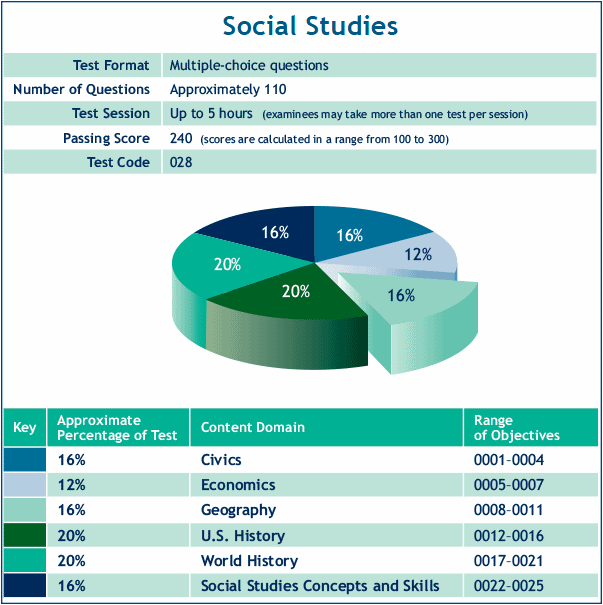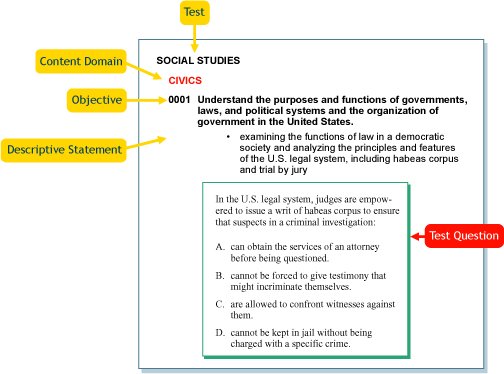WEST–E Test-Taking Strategies
[Download this page in PDF format ![]() ]
]
The Washington Educator Skills Tests—Endorsements (WEST–E) measure the subject-area content knowledge required of candidates seeking an endorsement to a Washington teaching certificate and are one component of the Washington Educator Skills Tests (WEST) program.
The information in this document is designed to help candidates taking a WEST–E test:
- Understand the structure and content of the test
- Develop a study plan
- Learn strategies for successful test-taking
For information regarding who must take a WEST test and which test(s) you need to take, visit the Washington
Professional Educator Standards Board (PESB) website at www.pesb.wa.gov ![]() .
.
Understanding the Structure and Content of the Test
The content knowledge assessed by each WEST–E test is described in the test summary and framework that is available to view or print by selecting "Prepare" and then "WEST–E Test Summaries and Frameworks" on the WEST website. The sections below describe how to use the test summary and framework to understand both the design and content of a WEST–E test.
Test Summary
Read the test summary to familiarize yourself with the structure of the test. The test summary outlines the following components for each test:
- the content areas covered
- the approximate number of test questions
- the types of questions (multiple-choice questions or constructed-response assignments)
- the percentage of your total test score derived from each content domain
The following is an example of a WEST–E test summary.

Test Framework
The test framework consists of objectives that are aligned with Washington standards for teacher preparation (the endorsement competencies) and, where applicable, the Washington State K–12 Learning Standards. The objectives are organized into major groupings of subject-area knowledge called content domains. Each objective is defined by a number of descriptive statements. These components are described below.
- Content domains are groupings of objectives that reflect the major domains of subject-area knowledge for the test. Candidates are given feedback on their performance on the content domains of the test.
- The objectives define the content on which candidates will be tested. They are broad descriptions of the knowledge, skills, and understandings that a teacher needs in order to effectively teach a content area in a Washington classroom.
- The descriptive statements provide further details about the nature and range of content covered by the objectives. They are intended to suggest the types of content that may be included in the test questions measuring the objective.
Test questions (multiple-choice questions or constructed-response assignments) are designed to measure specific content defined by one or more test objectives within each specific content domain. Content domains that consist of more objectives will receive more emphasis on the test through a greater number of test questions than those with fewer objectives.
The following example illustrates the relationship of a multiple-choice test question to the content domain, objective, and descriptive statement in the test framework to which it corresponds. This same direct relationship between multiple-choice test questions and their corresponding objectives applies to all WEST–E tests.

Planning Your Course of Study
| Step 1: To assess your content knowledge, read the test framework. |
The test framework is the only source that specifies the information covered by a WEST–E test.
- Read through the entire test framework for the test(s) you are taking to get a general picture of the material each test covers.
- The objectives included in the test framework form the foundation and focus for the test questions. The descriptive statements that follow each objective (indicated by bullets) provide examples of possible content covered by the objective. Read each objective and its descriptive statements carefully for a more specific idea of the content knowledge you will be required to demonstrate on the test.
| Step 2: To improve your test-taking skills, answer the sample questions. |
After you have become familiar with the test objectives, try to answer the sample test questions. The sample multiple-choice questions were developed in conjunction with the questions that appear on the actual test and are the best examples of the types of questions used on the test. Thus, answering these questions will give you valuable practice in answering questions like the ones you will see on the actual test.
After answering sample questions, check your answers against the answer key provided. If you answered a question incorrectly, or if you had a different rationale for the correct response, you may need to do some additional studying of the content covered by that objective.
If possible, take the sample test questions in a quiet room to simulate the testing environment. Time yourself as you complete the sample test questions to estimate the amount of time you will need to allow for questions on the actual test.
| Step 3: Develop a study plan to focus your studies. |
- Identify the most appropriate resources. These may be textbooks from courses you have taken. You may also wish to consult your class notes and materials and publications from professional education organizations.
- Develop a study schedule. Consider reviewing a book on study skills development or studying with other people who will be taking the test by forming or joining a study group.
Strategies for Success on the Day of the Test
Review the following strategies to help you do your best when taking the WEST–E.
| Follow directions | Listen to and follow all test directions. |
| Pace your work | The test session is designed to allow sufficient time for you to complete the subtests/tests for which you register. You may wish to review the test items for a subtest/test before you answer any test items to help you gauge how to pace yourself. If your test contains constructed-response assignments, remember to leave enough time to respond to the assignments. |
| Read carefully | Do not try to save time by skimming directions or by reading the test questions quickly. You may miss important information and instructions. |
| Determine the "best answer" | Your response to each multiple-choice question should be the best answer of the alternatives provided. Read and evaluate all four answer choices before deciding which one is best. |
| Guess wisely | Your multiple-choice results will be based on the number of questions you answer correctly. You will not be penalized for guessing. If you are unsure about a question, use your knowledge of the content area to eliminate as many of the alternatives as you can. Then select among the remaining choices. |
| Respond to constructed-response assignments fully and clearly | If the test you are taking includes constructed-response assignments, be sure to read and respond to each part of the assignment. It is important for scorers to be able to understand your responses. Also, make sure that you have recorded your responses to the constructed-response assignments as instructed. |
Need More Time?
To continue your session, select Stay Signed In.

